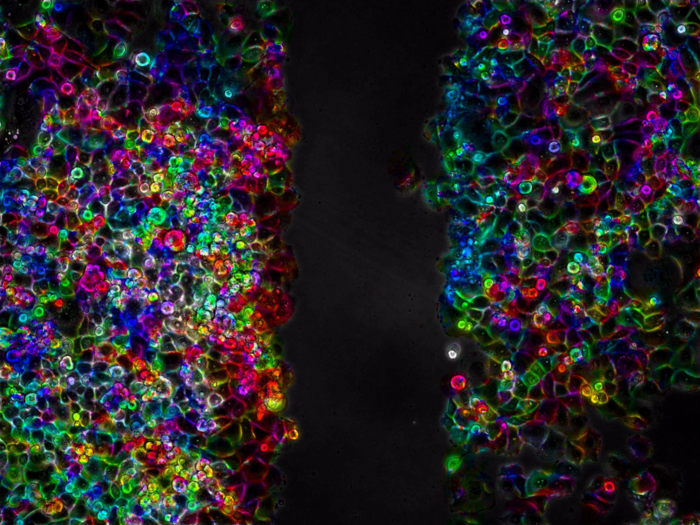A study led by Consejo Superior de Investigaciones Científicas (CSIC) has demonstrated the efficiency of a therapy based on radiation by ultrasounds on inhibtion of motion of cancer cells in pancreas cancer models. This work, recently published in Frontiers in Cell and Developmental Biology, opens a door to the development of new non-invasive treatments based on the use of the ultrasound technology to paralize solid tumor growth.

Credit: ITEFI-CSIC
A study led by Consejo Superior de Investigaciones Científicas (CSIC) has demonstrated the efficiency of a therapy based on radiation by ultrasounds on inhibtion of motion of cancer cells in pancreas cancer models. This work, recently published in Frontiers in Cell and Developmental Biology, opens a door to the development of new non-invasive treatments based on the use of the ultrasound technology to paralize solid tumor growth.
These tumor growth is accompanied of proliferation procesos and migration of the cancer cells. Current therapies including ionizing radiation damage malign and surrounding healthy cells. “Our research purposes by the first time the possibility to develop a new therapy exclusively base don the used of low intensity ultrasounds in control condions. “This non ionizing radiation could represent a nonivasive technology of low-cost production and easy application without colaterla damage”, explains Icíar González, researcher of CSIC in the Instituto de Tecnologías Físicas y de la Información “Leonardo Torres Quevedo” (ITEFI).
The authors have developed the experiments with in vitro pancreas samples. “The collective migration PANC-1 cell lines in monolayer is blocked during at least 2 days after applying a single dose of 20min low intensity ultrasound”, dscribes Gonzáleza. “Application of ultrasonic waves at certain controlled acoustic conditions during short times of 15/20 minutes inhibits the ability of motion of the cells (both collective and individual) for long times longer than 48 hours or even 3 days after the acoustic treatment. “We have also observed a certain inhibition on the cell proliferation as a second effect of the LICUS actuation that are currently being analyzed in new experiments and studies of gene expression”, she says.
Next step to verify the suitability and advantages of this technology as upcoming therapy are murine in vivo tests. For it a smart ultrasonic devices are developed adjustable to each mouse.
These experiments will be made in collaboration with researchers of the Harvard Medical School (L. Steele Lab), of the Basque Country University and Health Research Institute Ramón y Cajal IRYCIS.
Journal
Frontiers in Cell and Developmental Biology
DOI
10.3389/fcell.2022.842965




